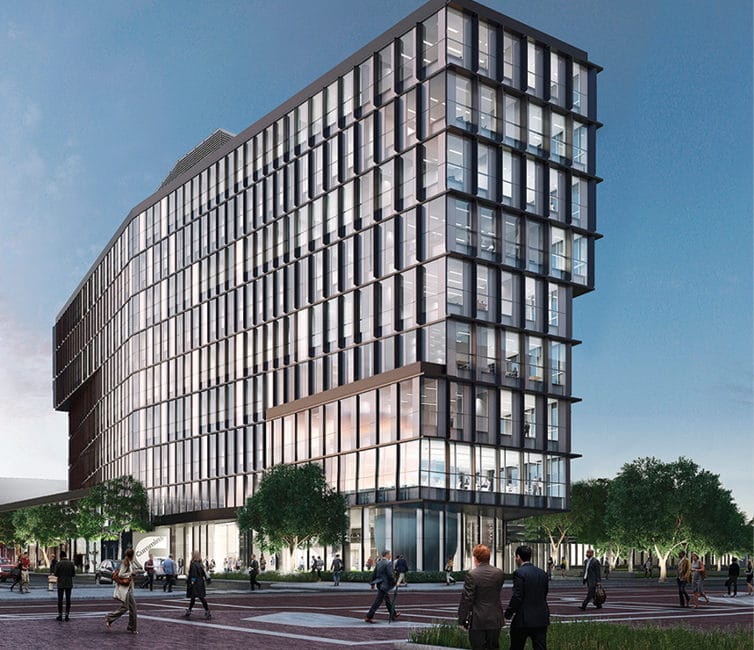
The New Downtown: The Grand Plan
This article is part of Indianapolis Monthly’s The New Downtown package, which includes a guide to five hotspots, a few big city problems, and a look at what’s next for the city. For more content on navigating the new downtown, click here.
A major architect is contributing an important building downtown for the first time since Chicago’s Skidmore, Owings & Merrill designed the OneAmerica tower in 1982. The firm of Deborah Berke, soon to become the first female dean of the Yale School of Architecture, is behind the Cummins Indy Distribution Headquarters on East Market Street and the nearby 21c Museum Hotel at Old City Hall. Both are modern, refreshing departures from Indy’s too-often-predictable aesthetic. She thinks Indy has great potential—but there’s one feature she hates.
These projects are not your introduction to Indianapolis.
I designed a house in Indianapolis more than 20 years ago, and I am currently designing one there. But I have worked in Columbus, Indiana, and in Cincinnati and Lexington and Louisville. I say this with affection: I see this collection of cities as actually having better architectural history than they themselves acknowledge. What I am seeing in Indianapolis that I love is the revitalization of old buildings that represent the fabric of the city. The Indianapolis streetscape is quite beautiful. The worst thing about Indianapolis is too many goddamn parking lots. There isn’t enough urban fabric for the streets to feel as rich and varied as they should.
The Cummins Indy Distribution Headquarters (pictured) your firm designed will be replacing one of those parking lots.
A full city block! Three blocks from Monument Circle! It’s mind-boggling to me, and heartbreaking. The good news is that you are putting a building on it.
For an office building, it has a some pretty interesting twists and avant-garde flourishes. How do you balance style with function in a project like this?
Cummins is an old and highly respected company, and we want the building to perform well for them and the city of Indianapolis for a long time. I don’t necessarily want people to look at it and go, “Oh, wow, that’s so 2016!” The goal was to be a contributing piece of Market Street, and that means a little less razzmatazz and a little more gravitas.
How will the Indianapolis 21c differ from its predecessors in other cities?
The Indianapolis is the first one that is a hybrid—we are both saving and reusing the historic building, and creating a new one to go with it. I am very excited about the architectural potential of that. I think the experience for the user will be very high contrast.
Both of these buildings seem to be a part of an exciting evolutionary leap for local architecture. How do you see them fitting into the city’s future?
What’s great that’s happening in Indianapolis is what’s also happening in many secondary and tertiary American cities—they are being revitalized. The next generation wants to walk down the street to a restaurant or a bar, or to walk with the kids to a park. Hopefully in all these cities with wonderful bones—and Indy has wonderful bones, with a good street plan and some fantastic buildings—the density will come back, improve the schools, and encourage more quality development. America has this wonderful collection of cities with successful businesses that were built when people made investments. They have professional sports teams, orchestras, theaters, museums, and foundations based there. These are all bones for great cities. You pity the cities that don’t have those things. Indianapolis definitely has them. It just needs a little fertilizer, a little water.
Hearing that from someone like you will go a long way toward curing some locals of their inferiority complex concerning our architecture.
Indianapolis has all the capabilities to be great. The people there just need to keep on nourishing it and not settling for mediocrity. I think the inferiority complex about the architectural history and urban plan is incorrect, and the real concern is to not let it become a self-fulfilling prophecy.





